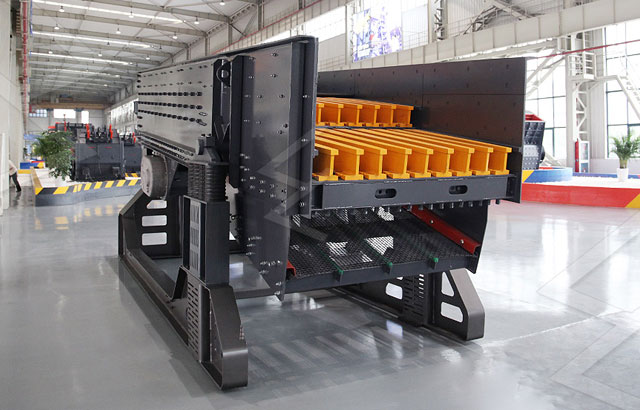In the realm of stone mining, optimizing operational efficiency is paramount for maximizing productivity and ensuring a smooth workflow. One crucial component that plays a pivotal role in this process is the vibrating feeder. This equipment serves as a bridge between the extraction of raw stone and subsequent processing stages. In this article, we will explore the significance of mining stone vibrating feeders and delve into their key features, benefits, and considerations for selecting the right feeder for your operations.

Key Features of Mining Stone Vibrating Feeders:
- Sturdy Construction: Vibrating feeders for stone mining are typically built with robust materials to withstand the harsh conditions of mining environments. This ensures longevity and minimal downtime due to equipment failure.
- Variable Speed and Adjustable Feed Rates: Modern vibrating feeders come equipped with variable speed controls and adjustable feed rates. This feature allows operators to customize the flow of material, optimizing the feeding process for different types of stones and varying production demands.
- High-Capacity Design: To meet the demands of large-scale stone mining operations, vibrating feeders are designed with high-capacity capabilities. This enables them to handle substantial volumes of raw material, contributing to increased overall efficiency.
- Vibration Control Mechanism: The vibration control mechanism in these feeders ensures a consistent and uniform flow of material onto the conveyor belt or into the processing equipment. This not only prevents congestion but also facilitates better screening and sorting downstream.
Benefits of Using Vibrating Feeders in Stone Mining:
- Improved Production Efficiency: By maintaining a continuous and regulated flow of raw material, vibrating feeders contribute significantly to the overall efficiency of stone mining operations. This results in increased productivity and throughput.
- Reduced Equipment Wear and Tear: The controlled and steady delivery of stones minimizes the wear and tear on downstream processing equipment. This leads to a longer lifespan for crushers, screens, and other machinery, reducing maintenance costs and downtime.
- Enhanced Safety: Vibrating feeders are instrumental in maintaining a steady flow of material, reducing the risk of equipment overloads and potential safety hazards. This ensures a safer working environment for mining personnel.
Considerations for Selecting a Vibrating Feeder:
- Material Characteristics: Different types of stones have varying characteristics. It’s crucial to choose a vibrating feeder that can handle the size, shape, and abrasiveness of the specific stones being processed.
- Capacity Requirements: Assess the production capacity needed for your mining operation and select a vibrating feeder with the appropriate capacity to meet those requirements.
- Environmental Conditions: Consider the environmental conditions of your mining site. Choose a vibrating feeder that is resistant to dust, moisture, and other elements to ensure reliable performance in challenging environments.
Investing in a high-quality vibrating feeder is a strategic decision for stone mining operations aiming to enhance efficiency and overall productivity. By understanding the key features, benefits, and selection criteria, mining companies can make informed choices that contribute to the success and sustainability of their operations.
